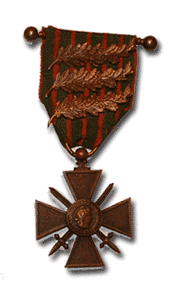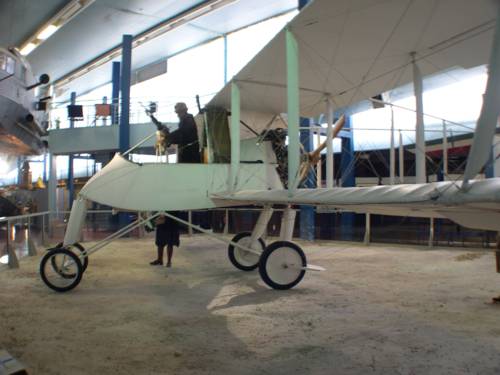United States Air Service
USAS HistorySummary 1917-1918 Lafayette Escadrille
N.124/Spa.124 1st Observation
1st, 12th, 50th, 88th 1st Pursuit Group
27th, 94th, 95th, 147th 1st Bombardment
96th, 11th, 20th 2nd Pursuit Group
13th, 22nd, 49th, 139th 3rd Pursuit Group
28th, 93rd, 103rd, 213th 4th Pursuit Group
17th, 148th, 25th, 141st 5th Pursuit Group
41st, 138th, 638th 3rd Air Park
255th. List of Aces
United States Naval Aviation
US Naval AviationUnited States Marine Corps Aviation
US Marine AviationAircraft
 Nieuport 28
Spad VII
Spad XIII
Fokker Dr.1
Albatros D.Va
Fokker D.VII
Nieuport 28
Spad VII
Spad XIII
Fokker Dr.1
Albatros D.Va
Fokker D.VII
Website: Atlanta SEO
E-mail us

A History of Fighter Aircraft
To many, manned flight starts with the Wright Brothers at the wind-swept sand dunes at Kitty Hawk in 1903. In fact, it starts 125 years earlier in France with two other brothers: the Montgolfier Brothers.
Of course, the weakness in this approach to flight was that there was very little control over the direction of the balloon in any axis other than limited control in altitude. And even those had to be made with a great deal of planning: ballast once shed could not be regained.
It could be argued that the Wright Brothers did not invent manned flight or even heavier than air powered flight. After all, the French maintain that their own Clement Ader achieved powered flight in a heavier than air machine back in 1890. Others may have as well. But Ader's machine barely got off of the ground and was uncontrollable. And while the French government advanced funding to Ader after his powered flight, he was unable to recreate the flight. So what the Wright Brothers invented was the airplane - the first practical use of a heavier than air powered machine with moveable control surfaces. And they were able to repeat and improve upon their first flight. Their first one was named the Wright Flyer. And thus it is from this first Wright Flyer of 1903 that all other aircraft are descended and why they are correctly accorded the title of inventors of the airplane.
While so many books marginalize the French Air Force, the impact of French designers, theoreticians and strategists on the war in the air was tremendous. The French invented the first manned flight - hot air balloons - whose descendants were later used for reconnaissance - the real first use of aircraft in warfare. They also invented photography which made reconnaissance even more important and reliable once people realized that cameras could be hoisted aloft. They later created the first fighter aircraft, organized fighter groups, originated both tactical and strategic bombing, and more. They developed more than 200 types of aircraft during the war. It was French Hispano-Suiza and Rhone-Gnome engines which powered many of the world's first fighter aircraft including even German and Russian aircraft. It was French fighters which were used not only by France, but also by Italy, Russia, the US and even, in small part, Great Britain, among others. At the end of the war, the French had 3,321 operational aircraft - more than any other country. The Germans had 2,730, the British 1,758 and the US 740 - mostly of French design and construction.
The first military aircraft were, by definition, reconnaissance aircraft. Their only mission was to fly over military lines to take photographs and to do anything else they could to assess and report on enemy dispositions. The Battle of the Marne was a near run thing for the Allies. But an Allied aviator noticed the Germans had punched a hole in between the Allied lines. This aviator's reports were what allowed the Allies to rapidly move troops to plug the hole to stave off complete defeat just a few weeks after the beginning of World War I.
The first pilots went aloft unarmed, even after the war broke out. After that, they started taking hand carried bombs, and then carrying pistols and other firearms to fire at other aircraft. After all, if the enemy pilots could be deterred from overflying friendly lines, then troop dispositions, preparations to attack, supply depots and much more could be kept hidden, increasing the fog of war and general uncertainty for the other side. Some aircraft had two crew members - a pilot and a navigator. It was the navigator who might stand up in his seat or hold to the trailing edge of the top wing and fire off a couple of rounds of his gun.
On October 5, 1914, a French air force pilot Joseph Frantz and his observer Louis Quenault flying their Voisin LA "chicken coop" aircraft over the Belgian village of Jamoigne intercepted a German Aviatik B.1. "Quenault struggled upright against the slipstream; leaning forward and manned the gun. Balancing precariously, half out of the open cockpit, he aimed and fired." The German pilot was a man named Wilhelm Schlichting and he was surprised to be on the receiving end of Hotchkiss machine gun fire. Schlichting's observer Fritz von Zangen was also armed, but Frantz kept his aircraft below the German one thus preventing the Germans from firing back. Quenault kept firing until his Hotchkiss guns jammed, but the damage had been done. The Germans went down in flames becoming the first to be shot down in combat.

Voisin LA, the same type used to score first air combat victory in history
But this was wildly inaccurate. Mounting a rear-facing gun behind the navigator's seat also proved impractical [due to an unfortunate tendency of the navigator to sometimes fall out of the aircraft since he had to stand to use the gun...] So the next logical step was to mount the gun straight in front of the pilot and use the aircraft itself as an aiming device.
Still the 87 mph Fokker Eindecker is the first true fighter aircraft - an aircraft designed to be a fighter instead of having guns added on as an afterthought. The French like Roland Garros had tried, but failed in creating their own interrupter gear and so instead used grooved deflector blades attached to the propellers to deflect the one in ten bullets that would hit the blades . Garros was very successful, but eventually a clogged fuel line downed him behind German lines. The Germans (actually a Dutchman named Anthony Fokker) took the idea further. They took Garros' Morane-Saulnier Type L parasol monoplane to Doberitz (near Berlin) and evaluated it. Fokker took the deflector blade idea further and built a successful interrupter gear to prevent bullets from hitting the propeller.
Now we fly at 39,000 feet at 600 mph watching movies, sipping wine, eating food, generally comfortable, safe and able to use a restroom. Crossing over the Atlantic Ocean takes roughly nine hours. The typical transatlantic airliner carriers 250 to 450 passengers. But when Louis Bleriot became the first to cross the English Channel by air July 24, 1909 it was almost as great of an accomplishment as when Charles Lindbergh became the first to fly the Atlantic Ocean solo on May 20-21, 1927. In August, 1909, it was considered an achievement just to get to an altitude of 1,000 feet, during the world's first air show at Rheims, France or to be able to cover 6 1/4 miles in 9 minutes in an airplane. Henry Farman won the endurance contest by keeping his aircraft up in the air for three hours. And Glenn Curtis had the best average speed of 43 mph.
We have come a long way in a century.
Related Links: Nieuport 17 | Nieuport 28 | Spad VII | Spad XIII | Spad XVI | Fokker D.VII and other German aircraft | Halberstadt CL.IV | Fokker Dr.1 | Albatros D.Va | Caudron G4 trainer | USN Curtiss N-9H trainer
| USN Thomas Morse SC-4 | USN Hanriot HD-1
| USN Sopwith Camel | What was the first American fighter plane?
Events/Airshows
 Events/Airshows
Events/Airshows
Pilots/Aviators
 Raoul Lufbery
Raoul LufberyAce of Aces Eddie Rickenbacker
26 victories Quentin Roosevelt
Son of President KIA Frank Luke
18 victories in 17 days Eugene Bullard
1st African Am. Pilot David Ingalls
1st US Navy Ace List of USAS Pilots
Find a Relative American WWI Pilots
Mini bios
USAS Research
 USAS Videos
Reading List
USAS Videos
Reading ListWWI US Aviation Related Links
WWI US Aviation Credits War Wings
by Phillip W. Stewart WWI Maps
Units & Airfields Payne Field
USAS Aerodromes now... USAS Archives
Questions? Need Help? American Expeditionary Forces
WWI Doughboys in France